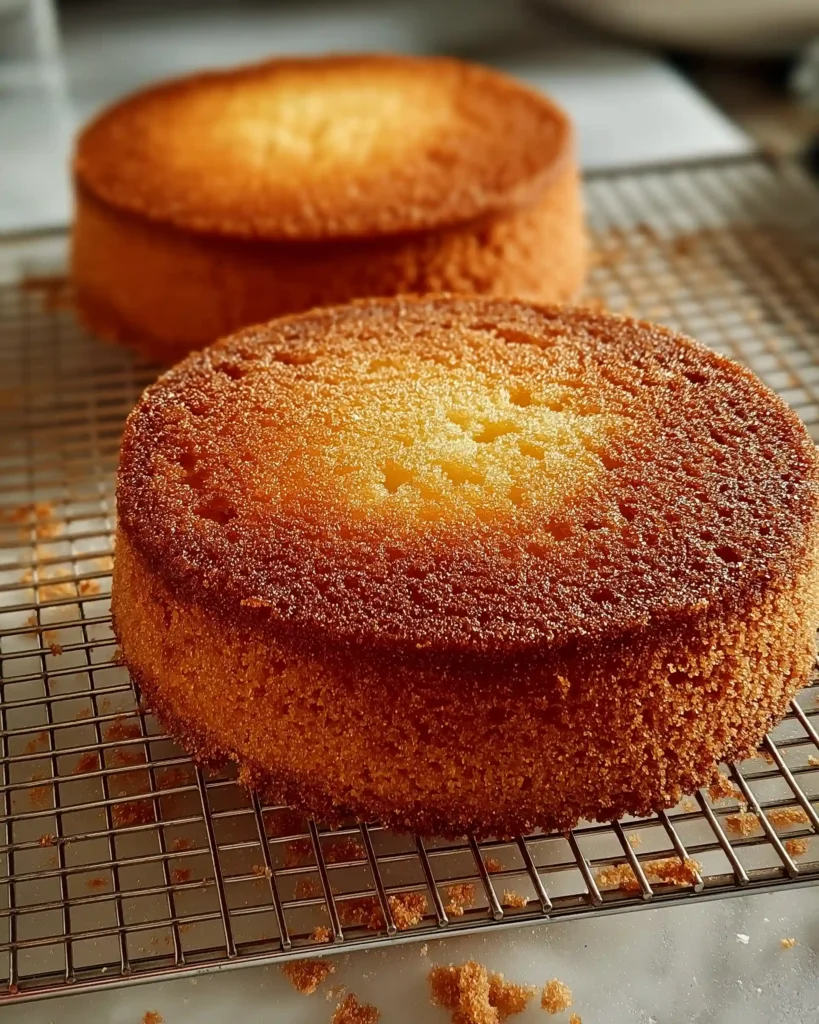If you’ve ever craved a slice of cake but didn’t want the guilt (or leftovers) of a full-sized one, this bento cake recipe is the perfect little treat. Originating from the adorable, compact lunch boxes of Japan, bento cakes are all about bite-sized indulgence. Whether you’re surprising a loved one or just treating yourself, these miniature cakes are a delight to make and even more fun to decorate. They fit perfectly into your busy day, adding a dash of sweetness without the fuss.
Contents
- 1 Why You’ll Love This Bento Cake Recipe
- 2 Ingredients You’ll Need:
- 3 Pro Tips for the Perfect Bento Cake
- 4 Equipment You’ll Need
- 5 Step-by-Step Guide to the Perfect Bento Cake
- 6 Cooking Tips & Tricks for Bento Cake Success
- 7 A Little Personal Story
- 8 Storage Tips for Your Bento Cake
- 9 Nutrition Facts and Important Info
- 10 Cooking Time and Yield for Bento Cake Recipe
- 11 Frequently Asked Questions (FAQs)
Why You’ll Love This Bento Cake Recipe
- Perfectly Sized: Just the right amount for a personal treat or a small celebration.
- Quick and Simple: With minimal ingredients and straightforward steps, you’ll have a little cake ready in no time.
- Customizable: Personalize it with your favorite flavors, colors, and designs – the options are endless!
Ingredients You’ll Need:
Before we dive into the baking, gather these simple, pantry-friendly ingredients:
- 100g Flora buttery or margarine (softened, leave out for about an hour)
- 100g caster sugar
- 1/2 tsp vanilla extract
- 2 large eggs
- 100g self-raising flour
Pro Tips for the Perfect Bento Cake
- Soft Butter is Key: For the fluffiest texture, make sure your margarine is soft but not melted.
- Personalize Your Cake: Add a splash of almond extract or a handful of chocolate chips to switch things up.
- Storage: These mini cakes are best enjoyed fresh but can be stored in an airtight container for up to 2 days.
Equipment You’ll Need
Before you dive into this bento cake recipe, make sure you have the following tools on hand for a smooth, fuss-free baking session:
- Mixing bowl
- Hand mixer or stand mixer
- Spatula
- Measuring cups and spoons
- Small round cake tin or cupcake molds (around 4 inches for that perfect mini size)
- Baking parchment or non-stick spray
- Cooling rack
- Offset spatula (for those perfectly smooth icing finishes)
- Piping bags and nozzles (if you’re feeling fancy with the decorations)
- Toothpick or cake tester
Step-by-Step Guide to the Perfect Bento Cake
Step 1: Preheat the Oven and Prep the Tin
- Start by preheating your oven to 350°F (175°C). This gives your cake the perfect environment to rise without sinking in the middle.
- Line your cake tin or cupcake molds with baking parchment or a light coating of non-stick spray to prevent sticking.
Step 2: Cream the Butter and Sugar
- In a large mixing bowl, add 100g of softened Flora buttery or margarine and 100g of caster sugar.
- Use a hand mixer or stand mixer on medium speed to beat the two together until the mixture turns pale, fluffy, and doubles in volume. This step is crucial as it helps trap air, creating a light, airy cake.
- Pro Tip: If you’re doing this by hand, think of it as a mini arm workout – it’s worth it for that fluffy texture!
Step 3: Add the Eggs and Vanilla
- Crack in 2 large eggs, one at a time, beating well after each addition to prevent curdling.
- Add 1/2 tsp of vanilla extract for that classic, comforting aroma that makes your kitchen smell like a bakery.
- Keep mixing until everything is fully combined and creamy.
Step 4: Fold in the Flour
- Gently sift in 100g of self-raising flour to avoid any lumps and ensure a smooth batter.
- Use a spatula to fold the flour into the butter mixture, using a gentle, sweeping motion to keep as much air in the batter as possible. Overmixing at this stage can lead to a dense cake, and no one wants that!
Step 5: Fill the Tins and Bake

- Spoon the batter into your prepared tin(s), spreading it out evenly.
- Gently tap the bottom of the tin on the counter to help release any trapped air pockets.
- Pop it into the preheated oven and bake for 15-20 minutes or until a toothpick inserted into the center comes out clean.

Step 6: Cool and Decorate

- Once baked, remove the cake(s) from the oven and let them cool in the tin for about 5-10 minutes.
- Move them onto a wire rack and let them sit until they’re no longer warm, so they’re ready for decorating. Warm cakes and icing are a messy combo, trust me!
- Get creative here – whether it’s a swirl of buttercream, a drizzle of chocolate, or some fresh fruit, this is your chance to make it uniquely yours.
Cooking Tips & Tricks for Bento Cake Success
- Room Temperature Ingredients: Let your eggs and butter sit out until they lose their chill—this helps everything blend more evenly when you mix. It’s like giving your cake a little head start.
- Sifting Matters: Sifting the flour might seem old-fashioned, but it helps keep your cake light and airy by removing lumps and adding a bit of air.
- Don’t Overmix: Once the flour is in, be gentle. You’re baking a cake, not kneading bread. Overmixing can turn your fluffy cake into a dense, sad little brick.
- Test for Doneness: If you don’t have a toothpick, use a clean knife or even a dry spaghetti stick to check if your cake is done. If it comes out clean, you’re good to go!
- Cool Completely Before Decorating: Trying to ice a warm cake is like trying to paint a wet wall – it just doesn’t work.
A Little Personal Story
I remember baking my very first bento cake as a special treat to celebrate when my daughter turned 10. She wanted a “tiny cake just for me,” and that’s when I stumbled upon the charm of these petite delights. It was a hit – the perfect size for a personal treat, without the pressure of finishing a whole cake. Now, it’s our go-to for every small celebration, from lazy Sunday afternoons to surprise anniversaries.
Storage Tips for Your Bento Cake
Once you’ve crafted your delightful mini bento cake, it’s essential to store it properly to keep it fresh and delicious for as long as possible. Here’s a handy guide on how to store your bento cake for the best taste and texture:
Room Temperature Storage:
- If your cake is unfrosted or decorated with simple buttercream, it can be kept at room temperature for up to 2 days.
- Keep it sealed tightly in a container so it stays moist and doesn’t lose its freshness. This also helps to keep unwanted odors from creeping into your cake – nobody wants a cake that tastes like last night’s spaghetti.
Refrigerator Storage:
- If your cake has cream cheese frosting, fresh fruit, or any other perishable toppings, it’s best to keep it in the fridge.
- Use a cake dome, airtight container, or wrap it tightly in plastic wrap to keep the cake moist and prevent it from absorbing fridge odors.
- It should stay fresh for about 4-5 days this way.
- Before serving, let it sit at room temperature for about 30 minutes to soften the frosting and bring back that fresh-baked flavor.
Freezer Storage:
- If you want to make your bento cake ahead of time, it can be frozen for up to 3 months.
- Wrap the unfrosted cake layers tightly in plastic wrap, then again in aluminum foil to prevent freezer burn.
- When you’re ready to enjoy it, thaw the cake in the fridge overnight, then bring it to room temperature before decorating.
Storage Tips for Iced Cakes:
- If your bento cake is already frosted, flash freeze it for about 1-2 hours before wrapping it tightly in plastic wrap. This keeps the frosting intact.
- Consider using a cake carrier for easy transportation and added protection.
Nutrition Facts and Important Info
Bento cakes may be small, but they pack a delightful punch in flavor and texture. While they are a fun, indulgent treat, it’s good to be aware of their nutritional profile, especially if you’re watching your sugar or fat intake. Here’s a quick breakdown:
Why Nutrition Matters:
Understanding the nutritional content of your bento cake can help you balance your diet and make informed choices. These mini cakes are perfect for portion control but can still be a significant source of calories and sugar, depending on the toppings and fillings you choose. If you’re aiming for a slightly healthier version, consider using lower-fat alternatives, reducing the sugar, or adding fresh fruits as a topping.
| Nutrition Facts | Per Serving (Approx. 1 Mini Cake) |
|---|---|
| Serving Size | 1 mini cake (about 100g) |
| Calories | 350-400 calories |
| Total Fat | 18g |
| Saturated Fat | 7g |
| Unsaturated Fat | 10g |
| Trans Fat | 0g |
| Cholesterol | 100mg |
| Sodium | 150mg |
| Total Carbohydrates | 45g |
| Dietary Fiber | 1g |
| Total Sugars | 30g (includes 25g added sugar) |
| Protein | 5g |
| Calcium | 40mg |
| Iron | 1.5mg |
| Potassium | 150mg |
| Vitamin A | 500 IU |
| Vitamin C | 0mg |
Keep in mind that these values can vary depending on the ingredients you use, such as the type of flour, sugar, and butter. Adding extras like chocolate chips, nuts, or fruit can also impact the overall nutrition, so adjust accordingly if you’re looking to make a healthier version.
Cooking Time and Yield for Bento Cake Recipe
Creating a perfect bento cake doesn’t take much time, which makes it a fantastic option for busy days or last-minute celebrations. Here’s a complete breakdown of the time you’ll need for each step:
| Cooking Time | Details |
|---|---|
| Prep Time | 15 minutes |
| Cook Time | 20 minutes |
| Cooling Time | 30 minutes |
| Decorating Time | 20 minutes |
| Total Time | 1 hour 25 minutes |
Yield:
- Makes 1 small bento cake (about 4-6 servings, depending on how generous you are with your slices).
Cuisine:
- This recipe is inspired by the Japanese tradition of bento, which emphasizes thoughtful, small-portioned meals that are both beautiful and satisfying.
This time breakdown gives you a realistic idea of how long it takes from mixing the batter to adding the final decorative touches, making it easier to plan your baking session without any surprises.
Though small in size, bento cakes are bursting with flavor and full of personality. Whether you’re making one for a special occasion or just to satisfy a sweet craving, this bento cake recipe offers the perfect balance of simplicity and creativity. With just a handful of basic ingredients, you can whip up a cake that feels as special as it tastes.
What makes these little cakes truly wonderful is their versatility. You can personalize them with bright colors, playful designs, or even heartfelt messages, making each one a tiny, edible piece of art. Plus, they’re perfectly sized for one or two people, so you won’t be stuck with half a cake lingering in the fridge – just enough to satisfy your sweet tooth without the guilt.
Baking a bento cake is also a great way to unwind, turning a simple batch of batter into a thoughtful, handmade treat. And if you have little helpers around, it’s a fantastic way to spend some quality time in the kitchen, letting them add their own creative touches.
So, whether you’re a seasoned baker or just starting out, this bento cake recipe is a delightful choice. It’s a wonderful reminder that good things do come in small packages – and sometimes, the sweetest surprises are the ones you bake yourself.
Frequently Asked Questions (FAQs)
Q1: Can I use regular butter instead of margarine in this bento cake recipe?
Absolutely! For a creamier and richer taste, you can replace margarine with unsalted butter – just be sure it’s at room temperature for smooth blending.
Q2: Can I make this bento cake recipe gluten-free?
Yes! Simply replace the self-raising flour with a gluten-free baking blend that includes a raising agent, or add a bit of baking powder if it doesn’t. This should keep the cake fluffy and light.
Q3: Can I add flavors to the batter?
Of course! You can mix in a little cocoa powder for a chocolate twist, or add a bit of lemon zest for a fresh, citrusy touch. Just adjust the liquid slightly if you’re adding dry ingredients.
Q4: Why is my bento cake dry or dense?
This usually happens if you overmix the batter or bake it for too long. Be gentle when folding in the flour, and keep an eye on the oven to avoid overbaking.

